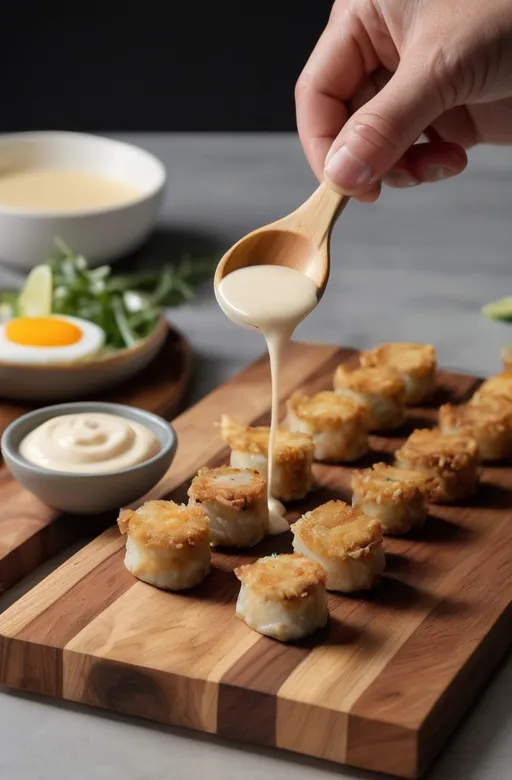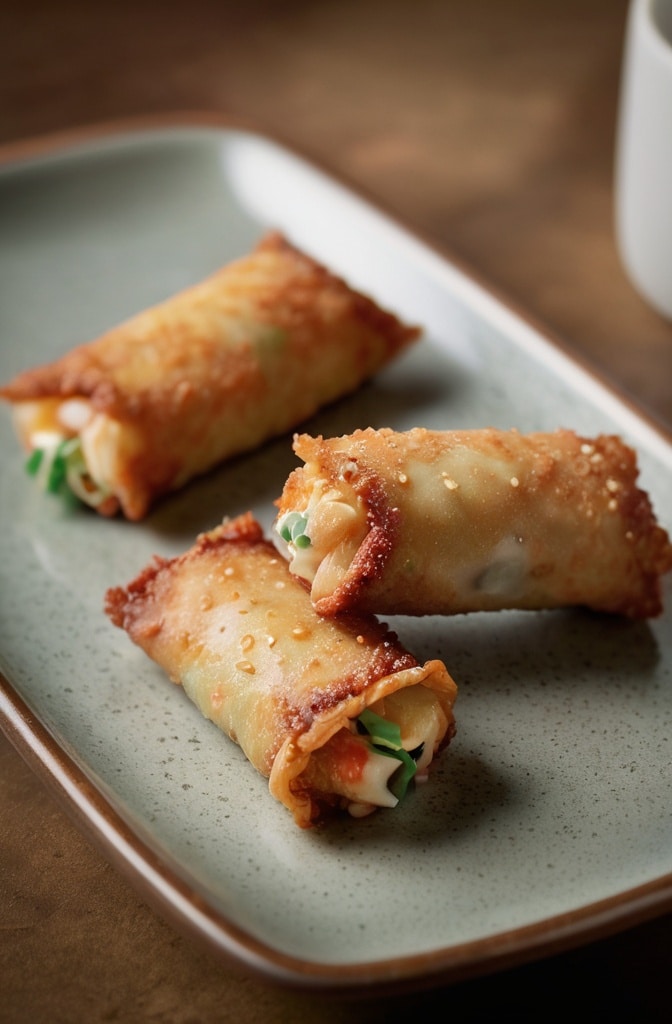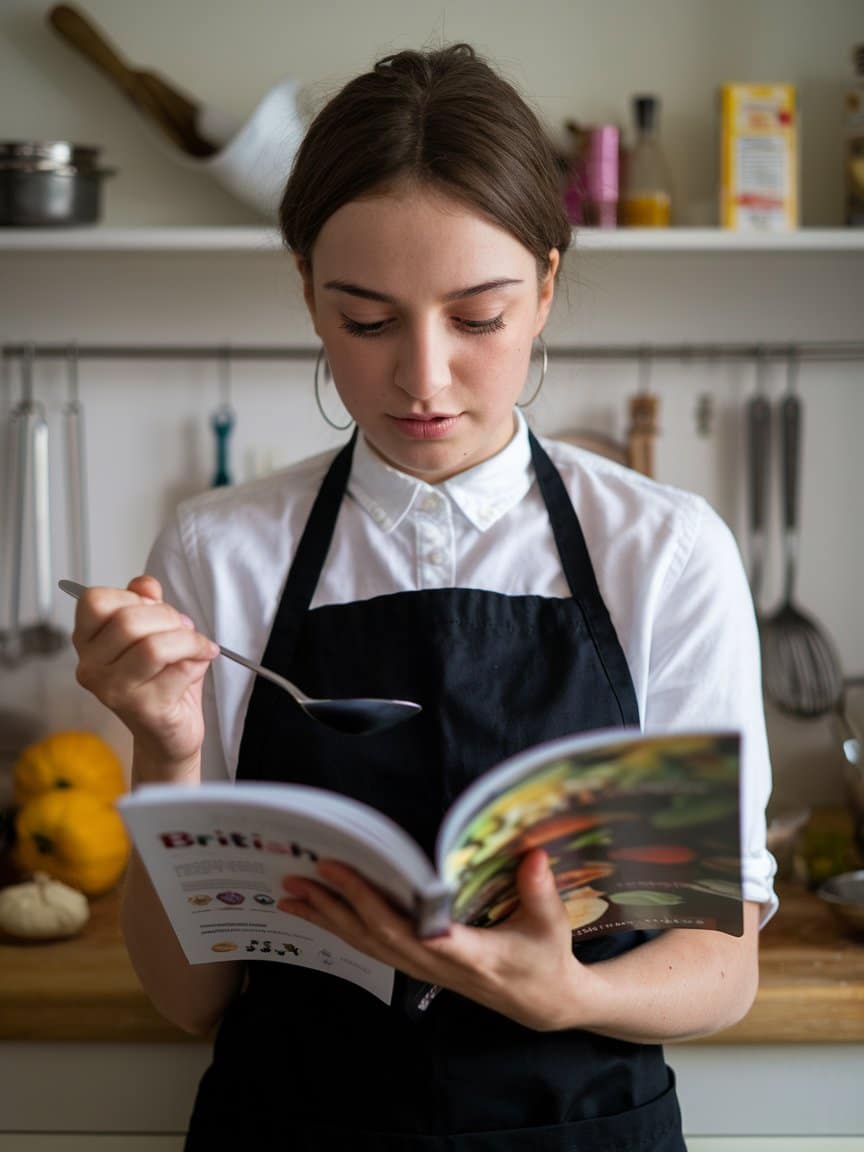I still remember the first time I encountered crab cake egg rolls. It was at a waterfront restaurant in Baltimore, where the chef had gotten creative after a particularly abundant blue crab season. What emerged from the kitchen that evening wasn’t just food—it was culinary alchemy. The crispy exterior giving way to that familiar, comforting crab cake filling… it was an absolute revelation that left me speechless for a moment. How had noone thought of this sooner?
Crab cake egg rolls represent the best kind of fusion cuisine—one that honors both traditions rather than diminishing either. They combine the luxurious, delicate sweetness of classic Maryland crab cakes with the satisfying crunch and portability of Chinese egg rolls. The result is an appetizer that’s simultaneously familiar and surprising, elegant yet approachable.
The Magic of Crab Cake Egg Rolls: Ingredients & Substitutions
The beauty of crab cake egg rolls lies in their harmonious balance of flavors and textures. Let’s break down what makes these fusion delights so irresistible:

For the Crab Filling:
- 1 pound jumbo lump crabmeat (blue crab preferred, picked over for shells)
- 1/4 cup mayonnaise (Japanese Kewpie mayo offers extra richness)
- 2 tablespoons Dijon mustard
- 1 large egg, lightly beaten
- 1/4 cup finely diced red bell pepper
- 1/4 cup finely diced celery
- 3 tablespoons minced chives
- 2 tablespoons finely chopped fresh parsley
- 1 tablespoon Old Bay seasoning (plus extra for serving)
- 1 teaspoon Worcestershire sauce
- 1/2 cup panko breadcrumbs
- Zest of 1 lemon
- 1 tablespoon fresh lemon juice
- 1/4 teaspoon cayenne pepper (optional)
For Assembly and Frying:
- 12-15 egg roll wrappers (square, approx. 8×8 inches)
- 1 egg beaten with 1 tablespoon water (for sealing)
- Vegetable or peanut oil for frying
- Small bowl of water for sealing
For the Dipping Sauce:
- 1/2 cup mayonnaise
- 2 tablespoons sriracha
- 1 tablespoon honey
- 1 teaspoon rice vinegar
- 1/2 teaspoon sesame oil
The crabmeat deserves special attention—it’s the star player here. While jumbo lump blue crab is traditional for Maryland-style crab cakes (and therefore ideal for our fusion creation), it can be prohibitly expensive depending on where you live. Dungeness crab makes an excellent substitute, with its sweet, delicate meat. In a pinch, even good-quality canned crabmeat can work, tho you’ll want to drain it extremely well and squeeze out excess moisture.
For those with shellfish allergies, hearts of palm or artichoke hearts, finely chopped and well-drained, can create a surprisingly convincing textural stand-in. I’ve also seen creative chefs use finely chopped lion’s mane mushrooms as a crab substitute—their seafood-like texture is remarkably similiar.
The panko breadcrumbs provide structure without heaviness. They’re crucial, as you need the filling to hold together inside the wrapper. Traditional breadcrumbs will work but lack the delicate crunch that makes panko special. For gluten-free options, crushed rice crackers or gluten-free panko can be substituted with minimal difference in the final product.
Step-by-Step Instructions: Crafting the Perfect Crab Cake Egg Roll
Creating these cross-cultural delights requires attention to detail, but the process is more straightforward than you might expect.

Preparing the Filling:
- Start by picking through your crabmeat meticulously, removing any shell fragments. This tedious step is non-negotiable—nothing ruins the luxurious experience faster than crunching down on a piece of shell. Place the cleaned meat in a large mixing bowl and set aside.
- In a separate bowl, combine mayonnaise, Dijon, beaten egg, Old Bay, Worcestershire, lemon zest, and lemon juice. Whisk until smooth and well incorporated. This wet mixture will bind everything together without overwhelming the delicate crab flavor.
- Add the red pepper, celery, chives, and parsley to the crab, folding gently with a rubber spatula. You’re looking to distribute the ingredients without breaking up those gorgeous lumps of crab too much—thats what guests are paying for! Pour the wet mixture over the crab and very gently fold until just combined.
- Sprinkle the panko over the mixture and again, fold gently until incorporated. The mixture should hold together when pressed but still remain somewhat loose and textured. If it seems too wet, add a touch more panko; if too dry, a small amount of mayo. Cover and refrigerate for atleast 30 minutes (or up to 4 hours) to allow flavors to meld and the mixture to firm up.
Rolling and Frying:
- Set up a clean, dry workspace with your egg roll wrappers, beaten egg wash, and a small bowl of water. Position a wrapper with one corner pointing toward you (diamond orientation). Keep unused wrappers covered with a slightly damp paper towel to prevent them from drying out.
- Place approximately 3 tablespoons of the chilled crab mixture in a line across the center of the wrapper, leaving about 1.5 inches clear on either side. Resist the urge to overfill—it’ll make rolling difficult and could lead to bursting during frying.
- Fold the bottom corner up over the filling, tucking it underneath slightly to create a tight seal. Fold in the sides toward the center, then brush the remaining exposed edges with egg wash before rolling upward to complete the egg roll. Press gently to seal the final edge. The egg roll should feel firm and compact, with no filling escaping.
- Heat oil in a heavy-bottomed Dutch oven or deep fryer to 350°F (175°C). The proper temperature is critical—too hot and the outside burns before the interior warms; too cool and the rolls become greasy. Use a deep-fry thermometer for accuracy, and don’t rush this step.
- Working in batches of 3-4 (depending on your pot size), carefully lower egg rolls into the hot oil. Fry until golden brown and crispy, about 3-4 minutes, turning occasionally for even browning. Don’t overcrowd the pot—this lowers the oil temperature and results in soggy egg rolls.
- Transfer finished egg rolls to a wire rack set over a baking sheet, never directly onto paper towels (which can create steam and soften the crispy exterior). Season immediately with a light dusting of additional Old Bay while still hot.
- Allow to cool slightly before serving—the interior gets molten hot during frying. Meanwhile, whisk together all dipping sauce ingredients until smooth. Adjust seasoning to taste.
A common mistake is rolling too loosely, which allows oil to seep inside during frying. Keep your rolls tight but not so tight that they burst. If you notice the filling expanding and threatening to break through during frying, your oil may be too hot—adjust accordingly.
For a lighter version, these can be brushed with oil and baked at 425°F for about 15-20 minutes, turning halfway through. The texture won’t be identical to fried, but you’ll still get a reasonably crisp exterior with all the flavor.
The Science Behind the Crunch: Cooking Techniques Explained

What makes these crab cake egg rolls work so well is the contrast between textures. We’re essentially creating a two-stage cooking process: the crab mixture remains tender and moist inside while the wrapper achieves that signature crispness.
The egg roll wrapper contains gluten proteins that, when introduced to hot oil, undergo a rapid dehydration process. As moisture evaporates, the proteins crosslink and form a rigid structure—this is what creates that satisfying crunch. Meanwhile, the moist filling inside gently steams within this protective shell.
Traditional Maryland crab cakes are typically pan-fried or broiled, which creates a different texture profile altogether. By encasing the mixture in a wrapper, we’re preserving more moisture and delicate flavor compounds that might otherwise be lost to evaporation during conventional cooking methods.
The temperature of your oil plays a critical role in this process. At 350°F, you hit the sweet spot where the wrapper crisps quickly enough to prevent oil absorption while still allowing sufficient time for the filling to warm through. A thermometer isn’t just helpful here—its essential. The difference between 325°F and 375°F is the difference between greasy, soggy disappointment and golden perfection.
For the tools, a spider strainer or slotted spoon is invaluable for safely removing the egg rolls from hot oil. A heavy-bottomed Dutch oven maintains temperature better than thinner pots, reducing the dramatic temperature drop that occurs when food is added to the oil.
Serving & Pairing: Elevating the Experience
Crab cake egg rolls occupy a fascinating culinary middle ground that opens up exciting serving possibilities. They can be elegant enough for a black-tie cocktail hour or casual enough for game day snacking.
For an upscale presentation, slice each egg roll diagonally and arrange standing up in a semi-circle around a ramekin of dipping sauce. Garnish with micro greens, tiny diced red bell pepper, and an artistic drizzle of sriracha mayo. A light dusting of Old Bay on the plate adds color and reinforces the flavor profile.
These rolls pair beautifully with crisp, acidic beverages that cut through the richness. A classic pairing would be a cold lager or pilsner, but don’t overlook wine options. An unoaked Chardonnay or Albariño brings the perfect balance of fruit and acidity. For non-alcoholic options, a sparkling yuzu or lemon beverage works wonderfully.
Consider serving these as part of a fusion-themed spread. They coexist beautifully alongside mini lobster rolls, tempura vegetables, or even classic dim sum items. The cultural conversation between East and West becomes a delicious narrative on your table.
For a fun interactive dinner party, create a DIY egg roll station. Prepare the crab filling and provide bowls of additional mix-ins like avocado, mango, or various herbs. Guests can customize their own rolls before you fry them to order—a memorable experience that gets everyone involved in the cooking process.
Conclusion
Crab cake egg rolls represent everything exciting about modern cuisine—respectful fusion, textural contrast, and an elegant solution to making a sometimes messy food more accessible. They transform a regional American classic into a finger food that travels well, stays intact during serving, and delivers concentrated bursts of flavor.
What makes these so special is how they maintain the essence of both parent dishes while creating something entirely new. The delicate sweetness of crab remains the star, enhanced rather than obscured by its crispy vehicle. The egg roll wrapper doesn’t just contain the filling—it elevates it.
For professional chefs, these offer excellent make-ahead potential for high-volume service. The rolls can be assembled hours before service and fried to order, streamlining execution during busy periods. For home cooks, they present an impressive yet approachable project that’s sure to generate compliments.
Remember that like many fusion dishes, crab cake egg rolls invite personalization. Once you’ve mastered the basic technique, consider it a template for your own creativity. Perhaps a corn and crab version with a touch of heat, or a spring-inspired iteration with fresh peas and mint. The possibilities extend as far as your imagination and respect for the core ingredients.
Frequently Asked Questions?
Can I make these ahead of time?
Absolutely! You can prepare the crab mixture up to 24 hours in advance, keeping it well-covered in the refrigerator. The fully rolled (but unfried) egg rolls can be prepared up to 4 hours ahead and stored with slight separation between them on a parchment-lined sheet, covered with plastic wrap. For longer storage, freeze the unfried rolls on a sheet pan until solid, then transfer to an airtight container. They can be fried directly from frozen—just add 1-2 minutes to the cooking time and watch carefully for even browning.
How do I prevent my egg rolls from becoming soggy?
Three key factors prevent sogginess: properly draining the crab mixture (excess moisture is the enemy), maintaining consistent oil temperature (use a thermometer!), and proper cooling. Always drain fried egg rolls on a wire rack rather than paper towels, which trap steam and soften the crispy exterior. If making these for a party, you can re-crisp slightly softened rolls in a 375°F oven for 3-4 minutes.
What’s the best way to reheat leftover crab cake egg rolls?
While they’re best fresh from the fryer, leftovers can be successfully reheated. For the best texture, use a 350°F oven for 8-10 minutes until heated through and re-crisped. Avoid the microwave, which will make them soggy and rubbery. An air fryer at 325°F for 3-4 minutes also works beautifully if you have one available.
Can I bake these instead of frying for a healthier version?
Yes, though the texture will differ somewhat from traditional fried egg rolls. To bake, place rolls on a parchment-lined baking sheet, brush generously with oil or melted butter on all sides, and bake at 425°F for about 15-20 minutes, turning halfway through cooking. They won’t achieve quite the same bubbled, crackling exterior as fried versions, but they’ll still be delicious with a respectable crunch.
Is there a gluten-free alternative for the wrappers?
Rice paper wrappers make a good gluten-free substitute, though they create a different texture—more chewy than crispy. Another option is lettuce wraps for a fresh, low-carb alternative that changes the character of the dish but maintains the flavor profile. For those willing to put in extra effort, homemade gluten-free wrappers can be prepared using rice flour, tapioca starch, and xanthan gum, though achieving the right thickness and texture requires practice.

Veronica is a passionate food enthusiast with over three years of experience in exploring and writing about diverse cuisines. Her expertise lies in reviewing restaurants, sharing creative recipes, and discovering the latest food trends. As the voice behind FoodieRecap.com, Anju brings fresh perspectives and culinary insights to her audience.
